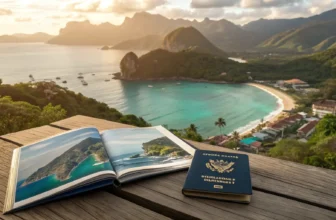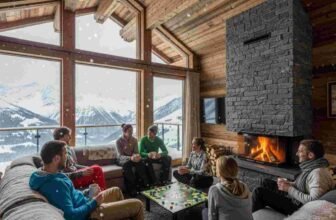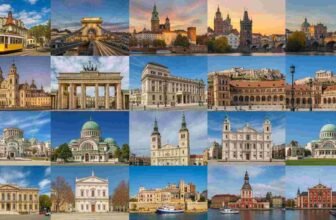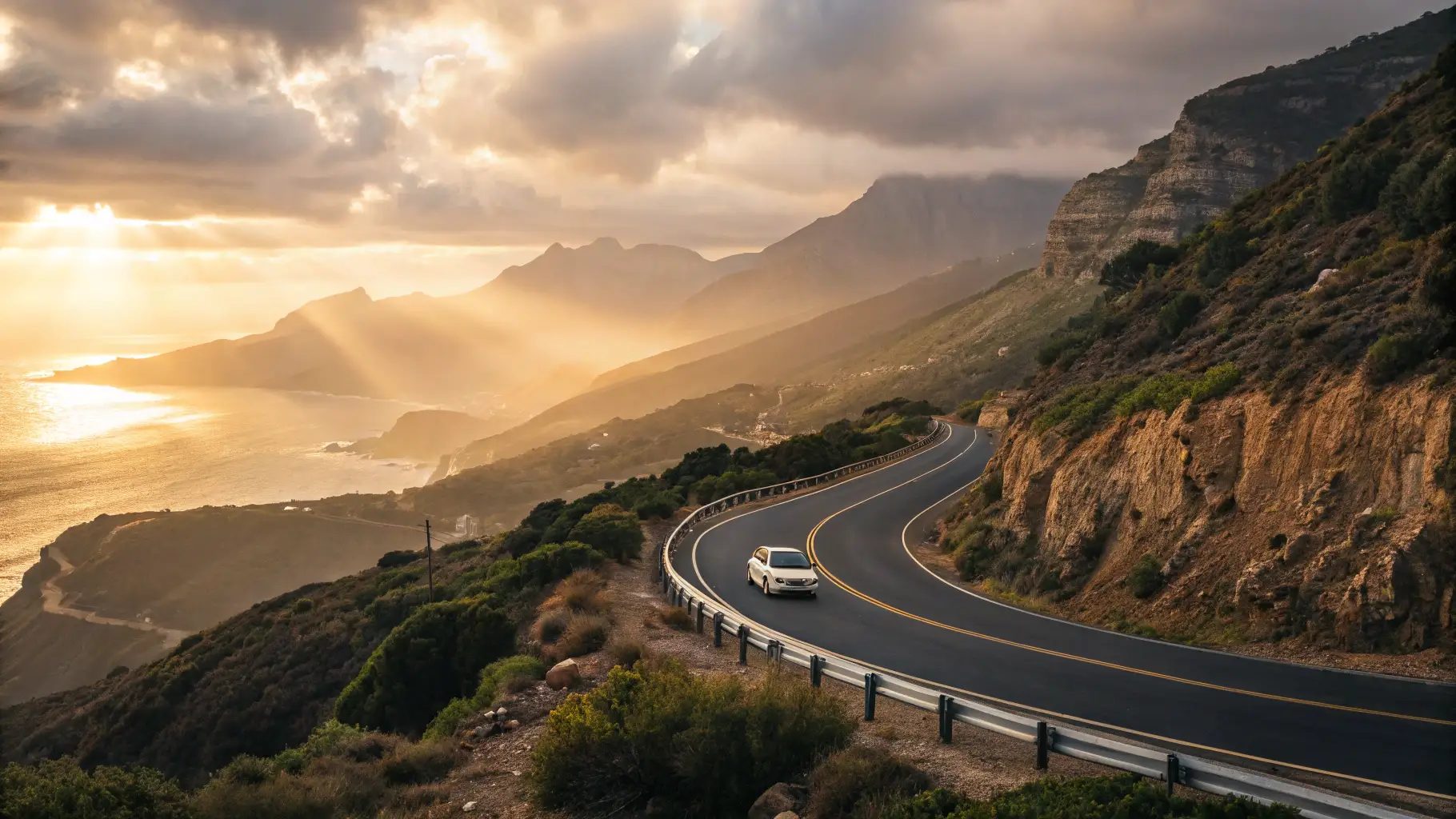
Lone curve disappears into morning mist, horizon swallowed by silence — and just like that, wonder takes the wheel. Each mile whispers something ancient, something forgotten. It’s not the destination pulling you forward… it’s the feeling of becoming untethered.
Craving clarity in a world that moves too fast? These road trips offer more than pretty views. They invite you to pause, reflect, and rediscover parts of yourself left behind in the rush.
Right now, we don’t just want to travel — we want to transform.
These 13 soul-stirring journeys aren’t just scenic — they’re medicine. And your road begins here.
1. Pacific Coast Highway, California (USA)
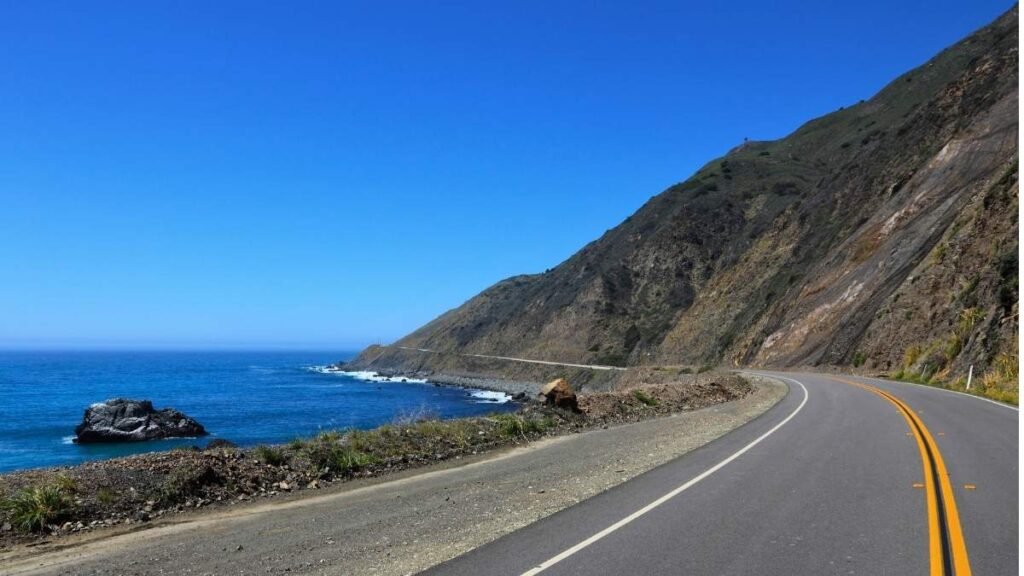
From the vibrant chaos of Los Angeles to the fog-draped serenity of San Francisco, the Pacific Coast Highway (PCH) hugs the rugged coastline like a long, winding love letter to freedom. Driving it feels like entering a visual symphony—cliffs dropping into roaring surf, winding roads flanked by redwoods, and golden sunsets melting over the Pacific. Pull over often: to marvel at elephant seals in San Simeon, stroll the artisan streets of Carmel-by-the-Sea, or sip Pinot Noir overlooking vineyard-covered hills.
One memorable moment was an early morning drive through Big Sur. The fog was still lifting, revealing Bixby Creek Bridge emerging like a dream through the mist. Somewhere between the soft hum of the engine and the crashing waves below, I realized this wasn’t just a scenic route—it was a spiritual reset. Time bends on the PCH; you lose track, not in confusion, but in clarity. Every stop invites introspection, and the silence between stretches of music and conversation becomes sacred. This road trip teaches presence—whether it’s the random roadside taco stand that changes your taste buds forever or the way the wind smells different at every turn. It’s the kind of journey where you come for the scenery, but stay for the self-discovery.
Key Practical Information
- Peak/Off-peak: April–October is ideal, with wildflowers in spring and clearer skies in late summer. Winter offers solitude but beware of landslides.
- Best way to explore: Start in San Diego or LA, rent a car, and drive north for better views.
- Ideal duration: 5–7 days to truly explore stops like Santa Barbara, Monterey, and Big Sur.
- Must-try experiences: Whale watching in Monterey, wine tasting in Paso Robles, Hearst Castle tour, sunset at Pfeiffer Beach.
- Budget: Mid-range to high; coastal towns and gas can be pricey.
- Etiquette: Be mindful of locals and don’t block scenic pullouts for long photo sessions. Respect protected areas.
- Photography: Bixby Bridge, McWay Falls, coastal turnouts—sunrise and sunset are golden.
2. Great Ocean Road, Victoria (Australia)
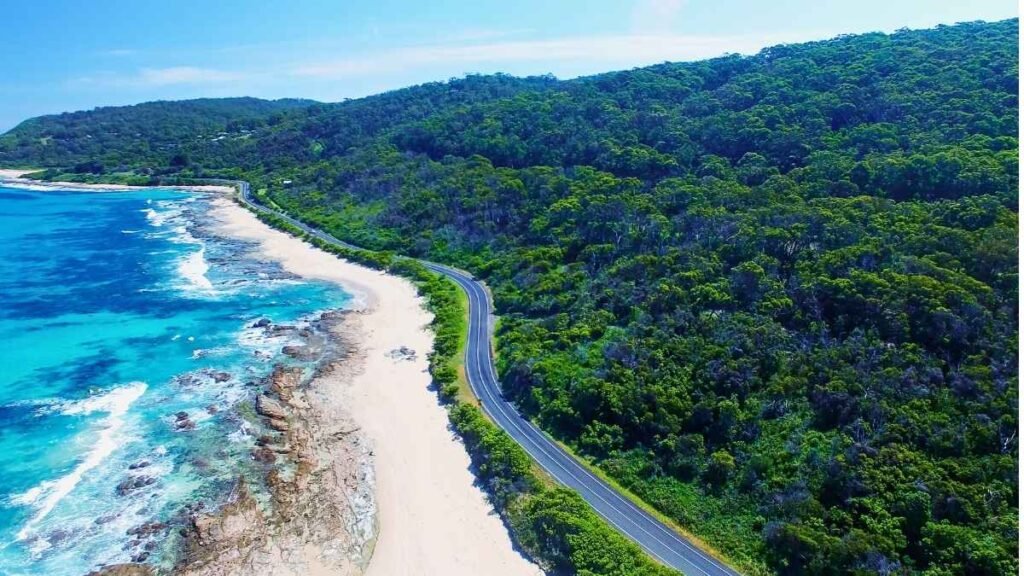
Carving through one of the most breathtaking coastlines on Earth, the Great Ocean Road feels like a continuous postcard come to life. Starting in Torquay, this legendary Australian route unfolds into a cinematic display of limestone cliffs, crashing waves, and towering rainforests. The star? The Twelve Apostles, standing sentinel in the surf like timeworn guardians of the Southern Ocean.
I remember stopping near Apollo Bay, taking a detour into the Otway Rainforest, where everything was damp, green, and alive. It had just rained. The smell of eucalyptus was intoxicating, and parrots shrieked overhead. Driving out, we caught a sunbeam slicing through clouds, spotlighting the ocean with almost divine timing. It’s the kind of road trip that gently forces you to slow down and notice—the geology, the wildlife, and even your breath. Every curve of this route feels intentional, as if the road was designed not just to connect towns, but to stitch together moments of awe. Whether you’re watching kangaroos bound near the roadside or sipping flat whites in sleepy surf towns, there’s a sense that this journey reconnects you with joy.
Key Practical Information
- Peak/Off-peak: Summer (Dec–Feb) offers great weather but more crowds. Spring and autumn (Sept–Nov, Mar–May) are best for fewer tourists and mild weather.
- Best way to explore: Rent a car in Melbourne and drive west toward Port Fairy.
- Ideal duration: 3–5 days, with overnight stops in Lorne, Apollo Bay, and Port Campbell.
- Must-try experiences: Helicopter ride over the Twelve Apostles, surf lesson in Torquay, rainforest walk in Great Otway National Park.
- Budget: Mid-range; petrol, food, and tours are moderately priced.
- Etiquette: Drive on the left, pull over frequently, and avoid feeding wildlife.
- Photography: Twelve Apostles, Loch Ard Gorge, Gibson Steps at golden hour.
3. Ring Road, Iceland
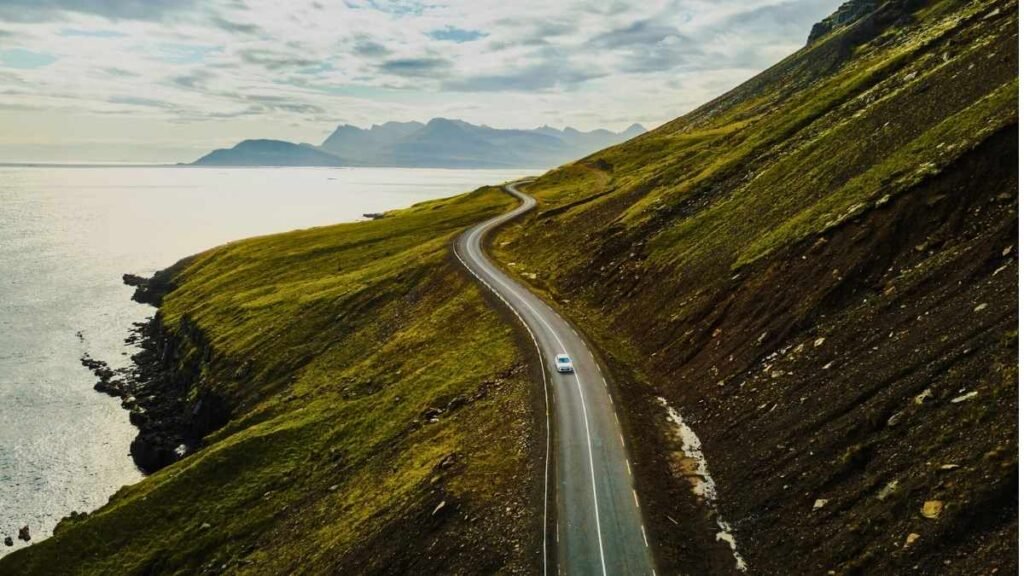
Imagine a world sculpted by fire and ice, where glaciers stretch to the horizon and volcanic craters rise like moonscapes—this is the Ring Road in Iceland. Encircling the island in just over 800 miles, the journey takes you from black sand beaches in the south to steaming geothermal valleys in the north. It feels like driving on the edge of Earth, where nature constantly rewrites the rules.
I remember sitting inside a steaming hot spring near Lake Mývatn, snowflakes falling softly on my face while the water below remained molten. The silence was only broken by the hiss of geothermal vents and the occasional call of an Arctic tern. In that moment, it wasn’t just travel—it felt like being on another planet, stripped of noise and distraction. It’s not just beautiful, it’s elemental. Each stretch of the Ring Road is a scene from a Norse epic. One minute you’re walking behind a waterfall (Seljalandsfoss), the next you’re staring up at the Northern Lights dancing like spirits above a lava field. It’s surreal, humbling, and eternally unforgettable.
Key Practical Information
- Peak/Off-peak: Summer (June–August) offers 24-hour daylight and easy access. Winter (Nov–Feb) is magical but requires a 4WD and caution.
- Best way to explore: Self-drive from Reykjavik, counter-clockwise for increasing drama.
- Ideal duration: 7–10 days for a full loop with detours.
- Must-try experiences: Ice cave tours, glacier hikes, hot springs, whale watching, Northern Lights.
- Budget: Expensive; fuel, food, and accommodations are pricey. Save with camper vans or guesthouses.
- Etiquette: Don’t walk on moss (it takes centuries to regrow), follow all signs near geothermal areas.
- Photography: Diamond Beach, Jökulsárlón Glacier Lagoon, Skógafoss, and any spot under the Aurora Borealis.
4. Garden Route, South Africa
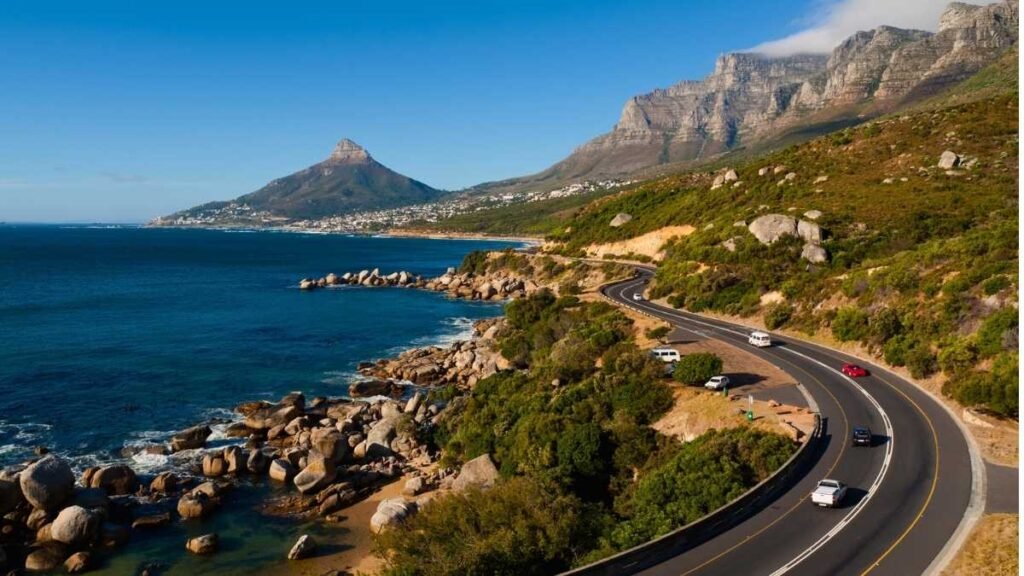
The Garden Route is where Africa whispers in technicolor—an intoxicating blend of lush forests, wild coastlines, and unexpected elegance. Starting from Mossel Bay to Storms River, this 300-km stretch winds through diverse ecosystems, dramatic coastlines, and charming towns like Knysna and Wilderness, where you can kayak at sunrise and dine with elephants by sunset.
One standout memory? Bungee jumping off the Bloukrans Bridge—not for thrill, but for release. As I stood over the edge, ocean wind in my ears, it wasn’t fear that hit me but a sense of surrender. This is what the Garden Route does: it breaks you open, not by overwhelming, but by inviting vulnerability through wild beauty. It’s more than scenery—it’s South Africa’s soul in motion, where you can hike with baboons one moment and sip fine Pinotage the next. Every bend in the road feels like a cinematic reveal, with scenes that stay burned in memory long after the trip ends.
Key Practical Information
- Peak/Off-peak: Nov–March is sunny and festive. May–Sept is off-season—quieter but cooler.
- Best way to explore: Drive from Cape Town, renting a car or joining a small group tour.
- Ideal duration: 5–7 days allows a rich experience.
- Must-try experiences: Tsitsikamma National Park hikes, Knysna oyster tasting, Addo Elephant safari, canopy tours.
- Budget: Affordable by Western standards; mid-range lodges and meals are excellent value.
- Etiquette: Greet locals with warmth; tipping (10–15%) is standard.
- Photography: Storms River Mouth, Cango Caves, Knysna Heads, African wildlife in golden light.
5. Route 1 – Big Sur to San Francisco (USA)
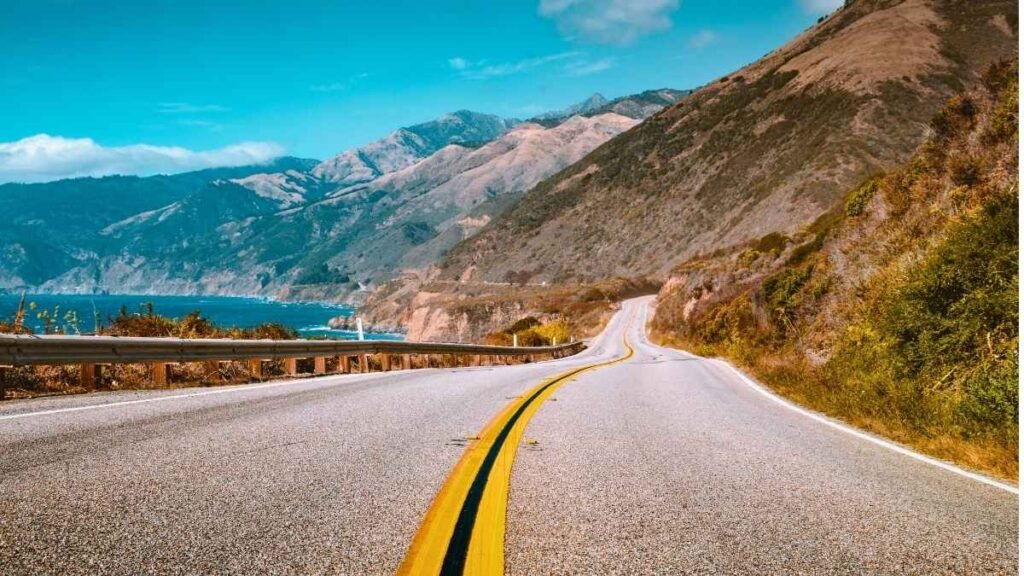
Though it overlaps the PCH, this stretch from Big Sur to San Francisco deserves its own love letter. It’s the soulful heart of California’s coastline, with gravity-defying cliffs, redwood cathedrals, and wind-sculpted beaches that demand your reverence. It’s a short route, but every mile breathes pure magic.
I pulled over near Garrapata State Park just as a pod of whales breached in the distance. Below me, the sea churned against ancient rock. No sound but wind. It was a moment that said: “You are small, and that’s beautiful.” That’s what makes this route so profound—it’s not grand in length, but in emotional depth. From artisan coffee in Carmel to fog-laced trails in Half Moon Bay, this road feels handcrafted. It’s a place where every curve invites meditation, and every overlook feels like it was made for your personal epiphany.
Key Practical Information
- Peak/Off-peak: Spring and Fall for wildflowers and clear skies. Summer is beautiful but crowded.
- Best way to explore: Drive south to north for cliffside views.
- Ideal duration: 2–4 days for immersive stops.
- Must-try experiences: Hiking in Point Lobos, dining at Nepenthe, walking among redwoods in Big Basin.
- Budget: Mid-to-high; boutique lodges and dining can be upscale.
- Etiquette: Stay on trails, support local artisans, respect wildlife.
- Photography: McWay Falls, foggy cypress groves, Highway 1 curves at golden hour.
6. Amalfi Coast Drive, Italy

Winding along steep cliffs that plunge into the turquoise Tyrrhenian Sea, the Amalfi Coast Drive is more than just a route — it’s an opera of nature, history, and Italian passion. As your car hugs the serpentine roads, each curve reveals a pastel-colored village clinging defiantly to the cliffs. The scent of lemons from hillside groves fills the air, mingling with sea breezes that carry the distant chime of church bells. Whether it’s the golden-hour glow over Positano or a roadside espresso stop in Ravello, this drive pulls you into a slower, more sensual rhythm.
A personal highlight? Watching the sunset from the terrace of a family-run trattoria in Praiano, with homemade limoncello in hand and the distant hum of vespas below. It’s in these quiet, postcard-perfect moments that the healing begins — when you’re no longer rushing, but simply soaking in the beauty of being present.
Practical Information
- Peak Season: May–September (warm, vibrant, busy)
- Off-Peak: October–April (quieter, cooler, some closures)
- Best Access: Fly into Naples, rent a car or use SITA buses
- Ideal Duration: 3–5 days to truly explore Positano, Amalfi, Ravello
- Must-Try Experiences: Boat ride to Capri, hiking the Path of the Gods, sipping limoncello in Minori
- Budget: Moderate to high; luxury hotels abound, but budget stays exist inland
- Cultural Etiquette: Dress modestly in churches; greet with a warm “Buongiorno”
- Photo Spots: Positano overlook, Ravello gardens, Furore Fjord
7. Route 40, Patagonia (Argentina)
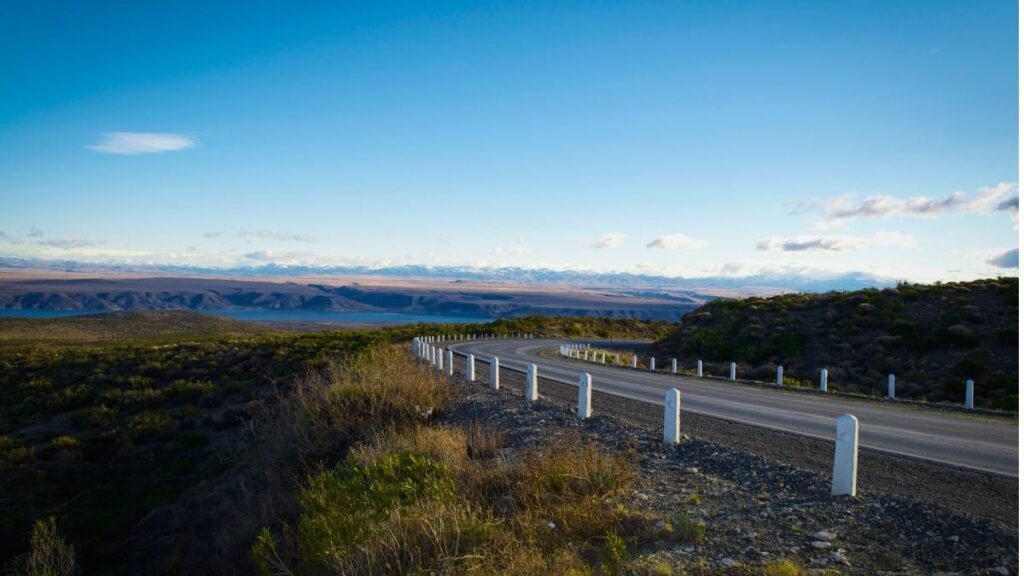
Vast, haunting, and untamed — Route 40 slices through the heart of Argentine Patagonia, offering a soul-stirring escape from modern noise. As you drive through lonely pampas, jagged mountain silhouettes rise in the distance like sleeping giants. Guanacos graze lazily by the roadside, and the wind seems to whisper stories of explorers past. Here, silence isn’t empty — it’s profound.
I still remember a moment near El Chaltén, parked under a night sky ablaze with stars. No signal. No lights. Just the hum of wind and the overwhelming feeling that this is what it means to feel alive. This road teaches you patience and reverence — it doesn’t ask to be conquered, only experienced.
Practical Information
- Peak Season: November–March (mild summer, clear views)
- Off-Peak: April–October (snow, some areas impassable)
- Best Access: Fly into Bariloche or El Calafate, rent a 4×4
- Ideal Duration: 1–2 weeks, depending on segments explored
- Must-Try Experiences: Glacier trekking on Perito Moreno, hiking Fitz Roy, sipping Malbec in Mendoza (north section)
- Budget: Moderate; fuel and distances add up, but wild camping helps
- Cultural Etiquette: Greet locals with respect — rural Patagonians are humble and warm
- Photo Spots: Perito Moreno Glacier, Ruta 40 signs, Mount Fitz Roy backdrop
8. Romantic Road, Germany
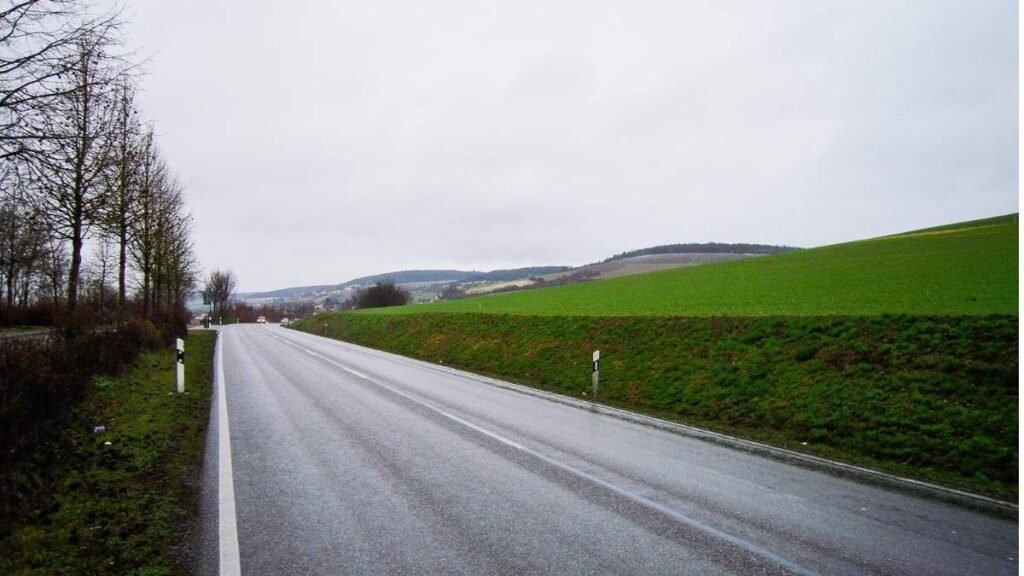
Germany’s Romantic Road is like flipping through a beautifully illustrated fairytale book. This 350-kilometer stretch from Würzburg to Füssen is dotted with half-timbered houses, medieval towers, and castles that seem plucked from dreams. Each village—Rothenburg ob der Tauber, Dinkelsbühl, or Augsburg—feels like a story waiting to unfold, with cobblestone streets and old-world charm preserved in amber.
Driving this route in autumn, I was struck by the golden leaves swirling around Neuschwanstein Castle, a scene straight from a Disney storyboard. The locals were preparing for a harvest festival, offering fresh pretzels and apple wine with unhurried hospitality. There’s something timeless here — a sense that beauty and simplicity still matter.
Practical Information
- Peak Season: May–September (warm, colorful, lots of festivals)
- Off-Peak: October–April (quieter, magical during Christmas)
- Best Access: Start from Frankfurt, rent a car for flexibility
- Ideal Duration: 5–7 days with multiple village stays
- Must-Try Experiences: Stay in Rothenburg’s medieval inn, visit Neuschwanstein, sample schnitzel & Riesling
- Budget: Moderate; plenty of affordable gasthauses and hearty food
- Cultural Etiquette: Be punctual, say “Hallo” and respect local quiet hours
- Photo Spots: Rothenburg’s Plönlein corner, Neuschwanstein Castle, Würzburg Residence gardens
9. North Coast 500, Scotland
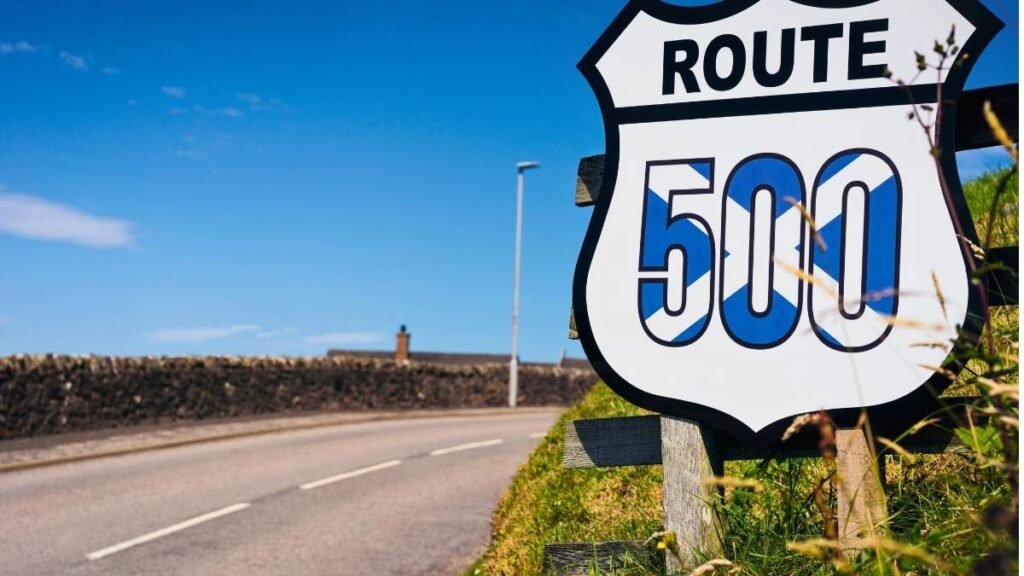
Scotland’s NC500 is a wild, windswept circuit around the northern Highlands — a road that heals through ruggedness. One moment you’re in a storybook glen, the next you’re navigating single-track roads beside crashing waves and sea-stacked cliffs. It’s raw, elemental beauty, where nature strips you bare and builds you back with every turn.
I’ll never forget an unexpected detour to a deserted beach near Durness, where I stood alone as the Atlantic roared. No tourists. Just a seal bobbing in the surf and ancient stone ruins tucked into the hills. There’s a primal stillness in the Highlands — one that whispers, “you are small, and that’s okay.”
Practical Information
- Peak Season: May–August (green, long daylight, busy)
- Off-Peak: September–April (moody skies, quiet roads, chilly)
- Best Access: Start in Inverness, rent a car or campervan
- Ideal Duration: 7–10 days for full loop with slow stops
- Must-Try Experiences: Seafood in Ullapool, wild camping, whisky tastings
- Budget: Moderate to high (fuel and lodging add up); camping lowers costs
- Cultural Etiquette: Respect single-track etiquette, don’t disturb crofts
- Photo Spots: Bealach na Bà pass, Smoo Cave, Castle Ardvreck ruins
10. Canadian Rockies Parkway (Banff to Jasper)
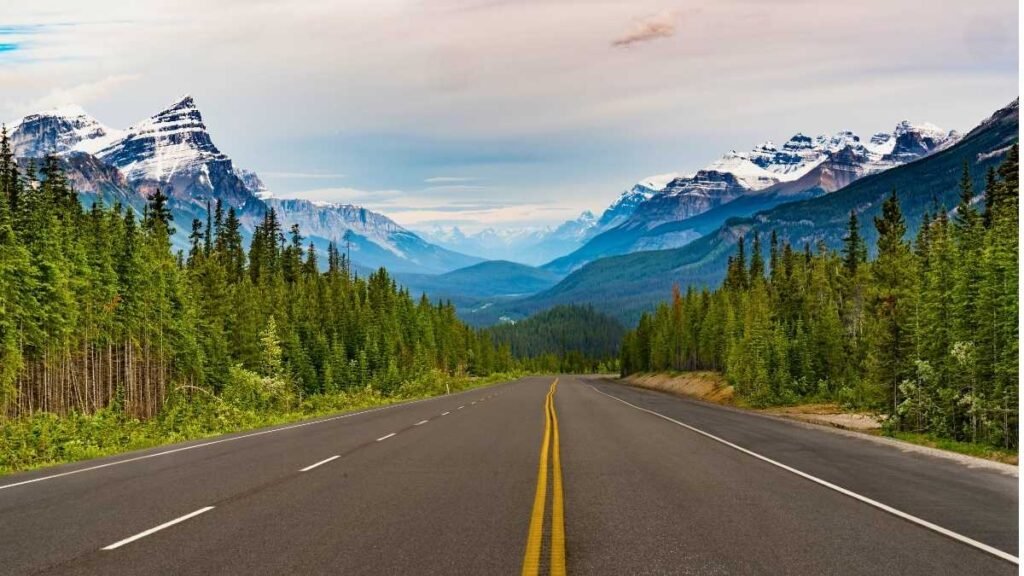
Driving through the Icefields Parkway feels like entering a living postcard. Glacial lakes in surreal blues, pine-covered valleys, and towering peaks dominate your view from Banff to Jasper. It’s a road that constantly reminds you of nature’s grandeur — where wildlife sightings (hello, elk and bears) are just part of the daily rhythm.
Once, pulling over at Peyto Lake, I watched a rainbow form over the turquoise water after a sudden summer storm. Total silence, except for the wind in the pines and my own heartbeat. Moments like that remind you: you don’t need WiFi when the world looks like this.
Practical Information
- Peak Season: June–September (clear roads, accessible hikes)
- Off-Peak: October–May (snowy, many closures, still gorgeous)
- Best Access: Fly into Calgary, rent a car in Banff
- Ideal Duration: 3–6 days with scenic stops
- Must-Try Experiences: Athabasca Glacier walk, Lake Louise canoeing, wildlife spotting
- Budget: Moderate; parks pass required; plenty of hostels/lodges
- Cultural Etiquette: Respect wildlife distance; pack out your trash
- Photo Spots: Peyto Lake, Moraine Lake, Athabasca Falls
11. The Silk Road (Uzbekistan to Kyrgyzstan segment)

A living museum of trade, tradition, and transformation, the Central Asian stretch of the Silk Road is one of the most perspective-shifting road trips on Earth. You’ll traverse deserts dotted with ancient caravanserais, sapphire-blue domes in Samarkand, and then climb into Kyrgyzstan’s emerald valleys and yurt-filled landscapes. It’s a journey between worlds.
The contrast between bustling bazaars in Bukhara and the serene stillness of Song Kul Lake is staggering. Sitting with nomads over tea, watching the stars emerge above a yurt camp, I felt humbled by cultures older than memory and kindness that needed no translation.
Practical Information
- Peak Season: April–June and September–October (mild, clear skies)
- Off-Peak: July–August (scorching heat) / Winter (freezing)
- Best Access: Start in Tashkent, end in Bishkek; use car with guide or group tour
- Ideal Duration: 10–14 days
- Must-Try Experiences: Samarkand’s Registan, Karakol hot springs, stay in a yurt
- Budget: Affordable; local meals and guesthouses are cheap
- Cultural Etiquette: Modest dress in rural areas; always accept tea with a smile
- Photo Spots: Registan Square, Pamir mountain passes, Issyk-Kul Lake
12. Trollstigen and Geirangerfjord Route, Norway
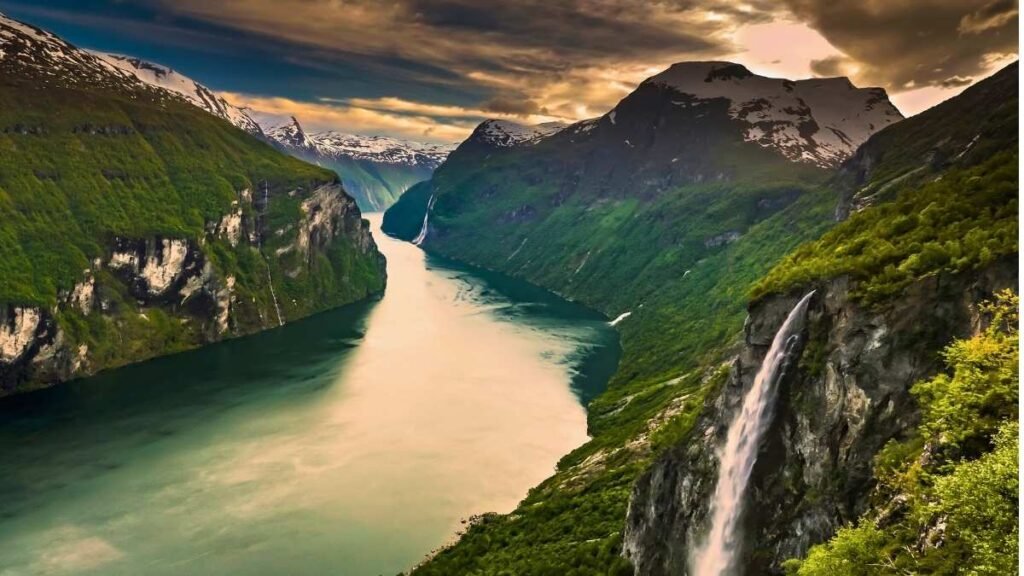
Norway’s most jaw-dropping drive is a vertical ballet through cascading waterfalls, switchback roads, and fjord-side villages. Trollstigen, or “Troll’s Ladder,” is the ultimate rollercoaster — with cliffs, mist, and raw drama that only the Norwegians could engineer with such elegance. Continue toward Geirangerfjord, and you’re met with emerald water framed by sheer, snowy cliffs.
On a foggy morning, I reached Ørnesvingen viewpoint, the fjord hidden behind swirling clouds. Minutes later, the mist parted like a curtain, revealing a sun-dappled cruise ship slicing through the glassy water. A moment of awe so profound, it hurt a little.
Practical Information
- Peak Season: June–August (lush, open roads)
- Off-Peak: September–May (many roads closed by snow)
- Best Access: Start from Ålesund, rent a car
- Ideal Duration: 2–4 days
- Must-Try Experiences: Kayaking Geirangerfjord, waterfall hikes, ferry crossing
- Budget: High; Norway is expensive but worth every krone
- Cultural Etiquette: Quiet admiration — Norwegians love nature in silence
- Photo Spots: Trollstigen viewpoint, Ørnesvingen, Seven Sisters Waterfall
13. The Wild Atlantic Way, Ireland
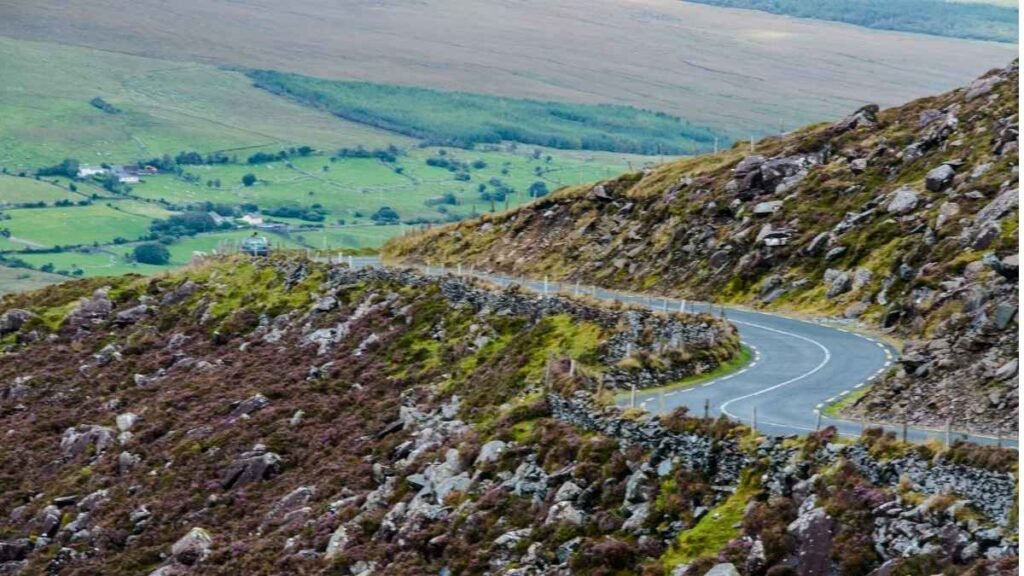
The Wild Atlantic Way is Ireland at its untamed best — 1,600 miles of coastal cliffs, misty moors, sheep-filled roads, and pubs that feel like warm hugs after a day in the wind. Whether you’re tracing the rugged edges of Donegal or the softer shores of Kerry, this journey feels ancient, poetic, and wonderfully unpredictable.
I remember an impromptu detour to Slieve League cliffs, where the fog cleared just enough to glimpse the world’s second-highest sea cliffs. Then, a pint and fiddle session in a tiny pub where everyone sang, and no one was a stranger. This road isn’t just healing — it’s welcoming.
Practical Information
- Peak Season: May–September (green, festivals, better weather)
- Off-Peak: October–April (moody skies, epic light, few crowds)
- Best Access: Fly into Dublin or Shannon, rent a car
- Ideal Duration: 7–14 days for a thorough route
- Must-Try Experiences: Cliffs of Moher, Dingle Peninsula, live music in Galway
- Budget: Moderate; B&Bs and pub food are plentiful
- Cultural Etiquette: Say “Thanks a million” and don’t rush the chat
- Photo Spots: Dunquin Pier, Cliffs of Moher, Sky Road


